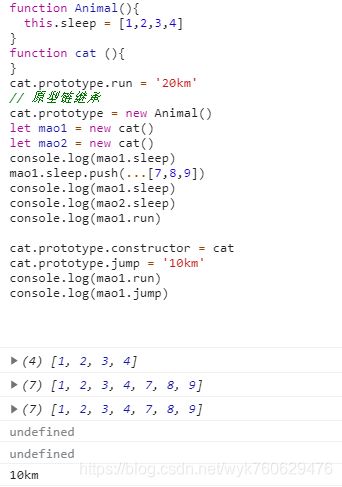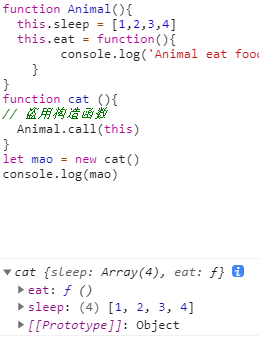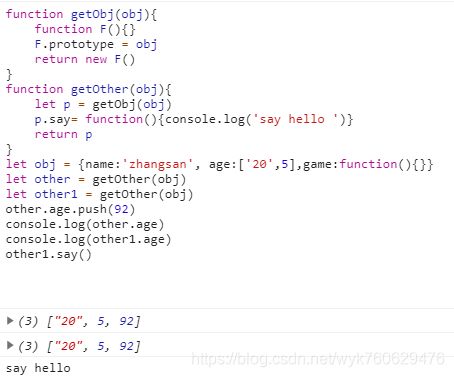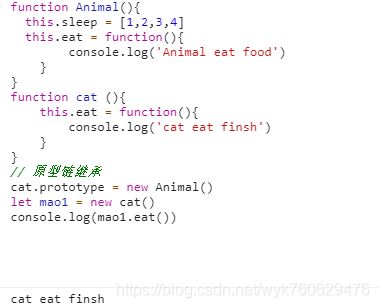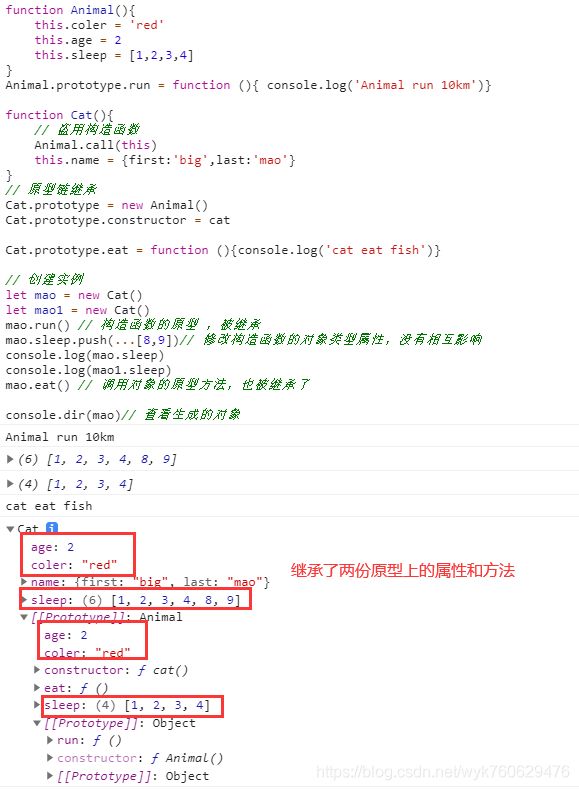- 如何调用dify工作流api,代码格式如下
importrequestsimportjson#API配置api_url="http://localhost:8082/v1/workflows/run"api_key="app-6Ef8WnCL1rB4oMtvPgaLBSJy"#请求头headers={ 'Authorization':f'Bearer{api_key}', 'Content-Type':'application/json
- 深入理解Tomcat 基本架构
水木石画室
tomcat架构java
Tomcat是Apache软件基金会旗下的开源Servlet容器,实现了JavaEE(现JakartaEE)的Servlet、JSP等规范,广泛用于JavaWeb应用的部署和运行。其架构设计围绕高效处理HTTP请求、灵活管理Web应用和支持扩展展开。以下从核心组件、层级结构、关键机制三个维度深入解析Tomcat的基本架构。一、Tomcat核心组件与层级结构Tomcat的架构采用分层容器模型,核心组
- gRPC服务发现
叹人间,美中不足今方信
服务发现gorpc
基于etcd实现的服务发现,按照非规范化的etcdkey实现,详细见代码注释。packagediscoveryimport("context""encoding/json""fmt""go.etcd.io/etcd/api/v3/mvccpb"clientv3"go.etcd.io/etcd/client/v3""google.golang.org/grpc/resolver""strings""
- Flutter-完整开发实战详解(一、Dart-语言和-Flutter-基础)
2401_85122662
flutter
《Android学习笔记总结+最新移动架构视频+大厂安卓面试真题+项目实战源码讲义》完整开源地址:https://docs.qq.com/doc/DSkNLaERkbnFoS0ZF基本类型var可以定义变量,如vartag=“666”,这和JS、Kotlin等语言类似,同时Dart属于动态类型语言,支持闭包。Dart中number类型分为int和double,其中java中的long对应的也是Da
- UniApp的学习
xuzhihuan焕
uni-app学习
一.Vue.js基础基本概念:总之,Vue.js是一个简洁、灵活、高效的前端JavaScript框架,具有响应式数据绑定、组件化开发、虚拟DOM等特点,适用于构建各种类型的Web应用。Vue.js介绍:了解Vue.js的起源、特点以及基本概念。特点:简洁易用:Vue.js的API简洁明了,学习曲线较为平缓,使得开发者能够快速上手。响应式数据绑定:Vue.js提供了响应式的数据绑定机制,当数据发生变
- 扣子智能体5:使用Python异步执行工作流并获取执行结果
呆萌的代Ma
大模型python扣子
使用python异步执行工作流的步骤有3步:异步执行工作流,获取工作流的execute_id,之后就能根据这个id查询工作流的执行情况如果execute_id=“Success”,就表示工作流执行完毕执行完毕后,打印output,就是大模型最后的全部示例代码fromloguruimportloggerimportrequestsimportjsondefrun_coze_ai(coze_api_t
- mybatis打印完整mysql_mybatis 通过拦截器打印完整的sql语句以及执行结果操作
weixin_39672680
开发过程中,如果使用mybatis做为ORM框架,经常需要打印出完整的sql语句以及执行的结果做为参考。虽然mybatis结合日志框架可以做到,但打印出来的通常都是sql和参数分开的。有时我们需要调试这条sql的时候,就需要把参数填进去,这样未免有些浪费时间。此时我们可以通过实现mybatis拦截器来做到打印带参数的完整的sql,以及结果通过json输出到控制台。直接看代码和使用方法吧:MyBat
- 网页token介绍(web token、web认证、web令牌、网页令牌)(JWT格式:JSON Web Token,头部Header、载荷Payload、签名Signature)
Dontla
前端前端
文章目录WebToken详解:从认证机制演变到实现原理认证机制的演变史传统认证方式的局限-服务器负载增加-扩展性受限-跨域应用困难-CSRF攻击风险高无状态认证的崛起WebToken核心概念什么是WebTokenToken家族成员-**JWT(JSONWebToken)**:最流行的实现-**SWT(SimpleWebToken)**:微软早期推出的简化版本-**SAMLToken**:企业级身份
- 【vue】用conda配置nodejs,一键开通模版使用权
温择之
conda
特此鸣谢我的好同学@重中之重的特级教学,非常之好用一、conda环境下载安装二、创建包含nodejs的conda环境创建一个新环境:condacreate-n【自定义环境名字】python=3.9condacreate-nmy_nodejs_envpython=3.9激活新环境:condaactivate【环境名字】condaactivatemy_nodejs_env下载安装nodejs:cond
- 大模型API密钥的环境变量配置(大模型API KEY管理)(将密钥存储在环境变量)(python-dotenv)(密钥管理)环境变量设置环境变量
Dontla
大模型LLMpython开发语言
文章目录大模型API密钥的环境变量配置:安全与最佳实践引言安全风险代码泄露风险版本控制暴露环境变量的优势安全隔离跨环境一致性环境变量配置方法Linux/macOS配置Windows配置开发框架集成Node.js使用dotenvPython使用python-dotenv最佳实践.env文件管理环境变量模板容器环境配置安全增强措施密钥轮换机制秘密管理服务集成总结大模型API密钥的环境变量配置:安全与最
- Vue3 响应式原理揭秘:为什么数据一改页面就变?
qqqdqd
vue.jsjavascript前端
Vue3最大的底层变革之一,就是响应式系统由Object.defineProperty转向了现代浏览器的ProxyAPI。你是否好奇:为什么state.count++,页面就自动更新了?一切的秘密,就藏在Vue的reactive()函数背后!核心原理:用Proxy劫持对象的读写操作简化实现如下:js复制编辑functionreactive(obj){returnnewProxy(obj,{get(
- (部署服务器系列四)部署Vue步骤(使用nodejs)
玄尺_007
#个人博客项目#前端服务器vue.js运维
1.构建项目(打包Vue):构建前设置main.js//关闭开发模式提示Vue.config.devtools=falseVue.config.productionTip=false设置指向的服务端后端ip和端口,我的常量属性统一放在了constants.jsexportconstAIOS_BASE_URL="http://192.168.0.111/api"exportconstIMG_BASE
- vue项目中使用nodejs实现登录
芜湖湖湖湖
nodejsvuemysqljavascript
用vue,nodejs,mysql做的一个登录的页面代码放完的话有点麻烦,只放实现功能的代码把。vue部分:exportdefault{data(){return{loginForm:{username:'',password:'',},//下面两行是vuelogo的不用理会circleUrl:require('../assets/logo.png'),size:100}},methods:{su
- C# 项目
卷纸要用清风的
C#c#开发语言
语言基础开发环境与工具框架与库数据库与数据存储项目架构与设计模式前端技术(全栈开发场景)版本控制与协作测试与质量保障部署与运维安全实战项目建议学习资源推荐总结语言基础C#语法:变量、数据类型、控制流(条件语句、循环)、运算符、异常处理(try-catch)等。面向对象编程(OOP):类与对象、继承、多态、封装、接口、抽象类。高级特性:委托(Delegate)与事件(Event)LINQ(Langu
- 手写一个虚拟DOM理解写jsx到底写了什么。
lichenyang453
前端javascriptreact.js
首先我们写的jsx语法,是用声明式的方式把React中的React.createElement简化,也就是一种语法糖。用代码举例子。1.简单例子constelement=(我我我console.log('点击')}>点我)这是声明式,我们直接声明一个类型div的React元素,属性有style,children,children包含一个字符串和一个类型为按钮,属性有onClick,children
- 【Python进阶篇 面向对象程序设计(3) 继承】
文章目录1、继承的基本语法(1)单继承(2)多重继承2、方法重写3、super()函数在面向对象编程中,被继承的类称为父类,新的类称为子类。1、继承的基本语法(1)单继承#继承#父类classFruit:color='绿色'defharvest(self,color):print("水果是:"+color+"的!")print("水果原来是:"+Fruit.color+"的!")#子类classA
- js FileReader对象
刘建状
jsjavascript前端开发语言
FileReaderd对象Document读取文本文件/**FileReader对象允许Web应用程序异步读取存储在用户计算机上的文件(或原始数据缓冲区)的内容,使用File或Blob对象指定要读取的文件或数据。*FileReader的实例拥有4个⽅法,其中3个⽤以读取⽂件,另⼀个⽤来中断读取*方法:*abortnone用于中断读取读取*readAsBinaryStringfile将文件读取为二进
- 深入对比四大主流 JavaScript 包管理器:npm、Yarn、pnpm、Bun
止观止
前端javascriptnpmyarnpnpmBun
引言在现代前端与Node.js开发中,包管理器(PackageManager)是构建高效工作流的关键工具,直接影响项目的安装速度、磁盘空间占用和团队协作效率。npm、Yarn、pnpm和Bun作为主流JavaScript包管理器,各有优劣。本文将基于权威资料(如npm官方文档、Yarn官方文档、pnpm官方文档、Bun官方文档),从核心原理、性能表现、依赖管理等维度进行深度解析,帮助开发者根据项目
- 华为OD机试 - 加密算法 - 深度优先搜索dfs(Python/JS/C/C++ 2025 B卷 200分)
哪 吒
华为od深度优先pythonjavascript华为OD机试2025B卷
2025B卷华为OD机试统一考试题库清单(持续收录中)以及考点说明(Python/JS/C/C++)。专栏导读本专栏收录于《华为OD机试真题(Python/JS/C/C++)》。刷的越多,抽中的概率越大,私信哪吒,备注华为OD,加入华为OD刷题交流群,每一题都有详细的答题思路、详细的代码注释、3个测试用例、为什么这道题采用XX算法、XX算法的适用场景,发现新题目,随时更新。一、题目描述有一种特殊的
- 华为OD机试 - 数字加减游戏(Python/JS/C/C++ 2025 A卷 200分)
哪 吒
华为od游戏python
2025华为OD机试题库(按算法分类):2025华为OD统一考试题库清单(持续收录中)以及考点说明(Python/JS/C/C++)。专栏导读本专栏收录于《华为OD机试真题(Python/JS/C/C++)》。刷的越多,抽中的概率越大,私信哪吒,备注华为OD,加入华为OD刷题交流群,每一题都有详细的答题思路、详细的代码注释、3个测试用例、为什么这道题采用XX算法、XX算法的适用场景,发现新题目,随
- 华为OD机试 - 相同数字的积木游戏1(Python/JS/C/C++ 2024 E卷 100分)
哪 吒
华为od游戏python
2025华为OD机试题库(按算法分类):2025华为OD统一考试题库清单(持续收录中)以及考点说明(Python/JS/C/C++)。专栏导读本专栏收录于《华为OD机试真题(Python/JS/C/C++)》。刷的越多,抽中的概率越大,私信哪吒,备注华为OD,加入华为OD刷题交流群,每一题都有详细的答题思路、详细的代码注释、3个测试用例、为什么这道题采用XX算法、XX算法的适用场景,发现新题目,随
- 华为OD机试 - 去除多余空格(Python/JS/C/C++ 2024 E卷 100分)
哪 吒
华为odpythonjavascript
2025华为OD机试题库(按算法分类):2025华为OD统一考试题库清单(持续收录中)以及考点说明(Python/JS/C/C++)。专栏导读本专栏收录于《华为OD机试真题(Python/JS/C/C++)》。刷的越多,抽中的概率越大,私信哪吒,备注华为OD,加入华为OD刷题交流群,每一题都有详细的答题思路、详细的代码注释、3个测试用例、为什么这道题采用XX算法、XX算法的适用场景,发现新题目,随
- 华为OD机试 - 猜密码 - 深度优先搜索dfs算法(Python/JS/C/C++ 2025 A卷 100分)
哪 吒
算法华为od深度优先2025A卷华为OD机试
2025华为OD机试题库(按算法分类):2025华为OD统一考试题库清单(持续收录中)以及考点说明(Python/JS/C/C++)。专栏导读本专栏收录于《华为OD机试真题(Python/JS/C/C++)》。刷的越多,抽中的概率越大,私信哪吒,备注华为OD,加入华为OD刷题交流群,每一题都有详细的答题思路、详细的代码注释、3个测试用例、为什么这道题采用XX算法、XX算法的适用场景,发现新题目,随
- 华为OD机试 - GPU 调度(Python/JS/C/C++ 2025 A卷 100分)
哪 吒
华为odpythonjavascript2025A卷华为OD机试
华为OD机试2025A卷题库疯狂收录中,刷题点这里专栏导读本专栏收录于《华为OD机试真题(Python/JS/C/C++)》。刷的越多,抽中的概率越大,私信哪吒,备注华为OD,加入华为OD刷题交流群,每一题都有详细的答题思路、详细的代码注释、3个测试用例、为什么这道题采用XX算法、XX算法的适用场景,发现新题目,随时更新。一、题目描述任务编排服务负责对任务进行组合调度。参与编排的任务有两种类型,其
- 华为OD机试 - 等差数列(Python/JS/C/C++ 2025 A卷 100分)
哪 吒
华为odpythonjavascript2025A卷华为OD机试
2025华为OD机试题库(按算法分类):2025华为OD统一考试题库清单(持续收录中)以及考点说明(Python/JS/C/C++)。专栏导读本专栏收录于《华为OD机试真题(Python/JS/C/C++)》。刷的越多,抽中的概率越大,私信哪吒,备注华为OD,加入华为OD刷题交流群,每一题都有详细的答题思路、详细的代码注释、3个测试用例、为什么这道题采用XX算法、XX算法的适用场景,发现新题目,随
- 华为OD机试 - 堆栈中的剩余数字(Python/JS/C/C++ 2025 B卷 200分)
哪 吒
华为odpythonjavascript2025A卷华为OD机试
一、题目描述向一个空栈中依次存入正整数,假设入栈元素n(1<=n=2^31-1)按顺序依次为nx…n4、n3、n2、n1,每当元素入栈时,如果n1=n2+…+ny(y的范围[2,x],1<=x<=1000),则n1~ny全部元素出栈,重新入栈新元素m(m=2*n1)。如:依次向栈存入6、1、2、3,当存入6、1、2时,栈底至栈顶依次为[6、1、2];当存入3时3=2+1,3、2、1全部出栈,重新入
- js中的FileReader对象
牧天白衣.
#JavaScriptjavascript前端开发语言
一个简单的例子来理解:读取用户上传的Excel文件(.xlsx),解析内容,并以表格形式在页面上显示出来。它依赖一个外部库:XLSX.js(即SheetJS),用于解析Excel数据。代码index.htmlDocument上传Excel文件index.js//读取excel并提取列内容constUploadFie=document.querySelector("#excelFile")Uploa
- 大学生HTML期末大作业——HTML+CSS+JavaScript游戏网站(英雄联盟)
无·糖
Web前端期末大作业html课程设计css美食游戏javascript大作业
HTML+CSS+JS【游戏网站】网页设计期末课程大作业web前端开发技术web课程设计网页规划与设计文章目录一、网站题目二、网站描述三、网站介绍四、网站效果五、️网站代码六、️如何学习进步七、☠️更多干货文章目录一、网站题目游戏网站(英雄联盟)含注册登录13页二、网站描述总结了一些学生网页制作的经验:一般的网页需要融入以下知识点:div+css布局、浮动、定位、高级css、表格、表单及验证、
- Java学习第二十二部分——了解框架
慕y274
java学习开发语言
目录一.概述二.分类1.Web开发框架2.持久层框架3.依赖注入框架4.安全框架5.微服务框架三.优势四.建议一.概述Java框架是一种用于简化Java开发过程的工具,它提供了一组预定义的类和接口,帮助开发者更高效地构建应用程序。二.分类1.Web开发框架-**SpringMVC**-**特点**:它是Spring框架的一部分,用于构建Web应用程序。它支持多种视图技术,如JSP、Thymelea
- 如何记住js的正则表达式
HebyH_
javascript正则表达式数据库
正则表达式(RegularExpressions)是处理字符串的强大工具,但确实需要一些记忆和练习才能掌握。以下是一些帮助你记忆JavaScript正则表达式的方法和常用模式:1.基础结构记忆法记住正则表达式的基本结构:/pattern/flags-斜杠包围模式,后面可跟标志例如:/hello/gi-匹配"hello",全局且不区分大小写2.常用元字符记忆口诀"点星加问,花括号量".匹配任意单个字
- 辗转相处求最大公约数
沐刃青蛟
C++漏洞
无言面对”江东父老“了,接触编程一年了,今天发现还不会辗转相除法求最大公约数。惭愧惭愧!
为此,总结一下以方便日后忘了好查找。
1.输入要比较的两个数a,b
忽略:2.比较大小(因为后面要的是大的数对小的数做%操作)
3.辗转相除(用循环不停的取余,如a%b,直至b=0)
4.最后的a为两数的最大公约数
&
- F5负载均衡会话保持技术及原理技术白皮书
bijian1013
F5负载均衡
一.什么是会话保持? 在大多数电子商务的应用系统或者需要进行用户身份认证的在线系统中,一个客户与服务器经常经过好几次的交互过程才能完成一笔交易或者是一个请求的完成。由于这几次交互过程是密切相关的,服务器在进行这些交互过程的某一个交互步骤时,往往需要了解上一次交互过程的处理结果,或者上几步的交互过程结果,服务器进行下
- Object.equals方法:重载还是覆盖
Cwind
javagenericsoverrideoverload
本文译自StackOverflow上对此问题的讨论。
原问题链接
在阅读Joshua Bloch的《Effective Java(第二版)》第8条“覆盖equals时请遵守通用约定”时对如下论述有疑问:
“不要将equals声明中的Object对象替换为其他的类型。程序员编写出下面这样的equals方法并不鲜见,这会使程序员花上数个小时都搞不清它为什么不能正常工作:”
pu
- 初始线程
15700786134
暑假学习的第一课是讲线程,任务是是界面上的一条线运动起来。
既然是在界面上,那必定得先有一个界面,所以第一步就是,自己的类继承JAVA中的JFrame,在新建的类中写一个界面,代码如下:
public class ShapeFr
- Linux的tcpdump
被触发
tcpdump
用简单的话来定义tcpdump,就是:dump the traffic on a network,根据使用者的定义对网络上的数据包进行截获的包分析工具。 tcpdump可以将网络中传送的数据包的“头”完全截获下来提供分析。它支 持针对网络层、协议、主机、网络或端口的过滤,并提供and、or、not等逻辑语句来帮助你去掉无用的信息。
实用命令实例
默认启动
tcpdump
普通情况下,直
- 安卓程序listview优化后还是卡顿
肆无忌惮_
ListView
最近用eclipse开发一个安卓app,listview使用baseadapter,里面有一个ImageView和两个TextView。使用了Holder内部类进行优化了还是很卡顿。后来发现是图片资源的问题。把一张分辨率高的图片放在了drawable-mdpi文件夹下,当我在每个item中显示,他都要进行缩放,导致很卡顿。解决办法是把这个高分辨率图片放到drawable-xxhdpi下。
&nb
- 扩展easyUI tab控件,添加加载遮罩效果
知了ing
jquery
(function () {
$.extend($.fn.tabs.methods, {
//显示遮罩
loading: function (jq, msg) {
return jq.each(function () {
var panel = $(this).tabs(&
- gradle上传jar到nexus
矮蛋蛋
gradle
原文地址:
https://docs.gradle.org/current/userguide/maven_plugin.html
configurations {
deployerJars
}
dependencies {
deployerJars "org.apache.maven.wagon
- 千万条数据外网导入数据库的解决方案。
alleni123
sqlmysql
从某网上爬了数千万的数据,存在文本中。
然后要导入mysql数据库。
悲剧的是数据库和我存数据的服务器不在一个内网里面。。
ping了一下, 19ms的延迟。
于是下面的代码是没用的。
ps = con.prepareStatement(sql);
ps.setString(1, info.getYear())............;
ps.exec
- JAVA IO InputStreamReader和OutputStreamReader
百合不是茶
JAVA.io操作 字符流
这是第三篇关于java.io的文章了,从开始对io的不了解-->熟悉--->模糊,是这几天来对文件操作中最大的感受,本来自己认为的熟悉了的,刚刚在回想起前面学的好像又不是很清晰了,模糊对我现在或许是最好的鼓励 我会更加的去学 加油!:
JAVA的API提供了另外一种数据保存途径,使用字符流来保存的,字符流只能保存字符形式的流
字节流和字符的难点:a,怎么将读到的数据
- MO、MT解读
bijian1013
GSM
MO= Mobile originate,上行,即用户上发给SP的信息。MT= Mobile Terminate,下行,即SP端下发给用户的信息;
上行:mo提交短信到短信中心下行:mt短信中心向特定的用户转发短信,你的短信是这样的,你所提交的短信,投递的地址是短信中心。短信中心收到你的短信后,存储转发,转发的时候就会根据你填写的接收方号码寻找路由,下发。在彩信领域是一样的道理。下行业务:由SP
- 五个JavaScript基础问题
bijian1013
JavaScriptcallapplythisHoisting
下面是五个关于前端相关的基础问题,但却很能体现JavaScript的基本功底。
问题1:Scope作用范围
考虑下面的代码:
(function() {
var a = b = 5;
})();
console.log(b);
什么会被打印在控制台上?
回答:
上面的代码会打印 5。
&nbs
- 【Thrift二】Thrift Hello World
bit1129
Hello world
本篇,不考虑细节问题和为什么,先照葫芦画瓢写一个Thrift版本的Hello World,了解Thrift RPC服务开发的基本流程
1. 在Intellij中创建一个Maven模块,加入对Thrift的依赖,同时还要加上slf4j依赖,如果不加slf4j依赖,在后面启动Thrift Server时会报错
<dependency>
- 【Avro一】Avro入门
bit1129
入门
本文的目的主要是总结下基于Avro Schema代码生成,然后进行序列化和反序列化开发的基本流程。需要指出的是,Avro并不要求一定得根据Schema文件生成代码,这对于动态类型语言很有用。
1. 添加Maven依赖
<?xml version="1.0" encoding="UTF-8"?>
<proj
- 安装nginx+ngx_lua支持WAF防护功能
ronin47
需要的软件:LuaJIT-2.0.0.tar.gz nginx-1.4.4.tar.gz &nb
- java-5.查找最小的K个元素-使用最大堆
bylijinnan
java
import java.util.Arrays;
import java.util.Random;
public class MinKElement {
/**
* 5.最小的K个元素
* I would like to use MaxHeap.
* using QuickSort is also OK
*/
public static void
- TCP的TIME-WAIT
bylijinnan
socket
原文连接:
http://vincent.bernat.im/en/blog/2014-tcp-time-wait-state-linux.html
以下为对原文的阅读笔记
说明:
主动关闭的一方称为local end,被动关闭的一方称为remote end
本地IP、本地端口、远端IP、远端端口这一“四元组”称为quadruplet,也称为socket
1、TIME_WA
- jquery ajax 序列化表单
coder_xpf
Jquery ajax 序列化
checkbox 如果不设定值,默认选中值为on;设定值之后,选中则为设定的值
<input type="checkbox" name="favor" id="favor" checked="checked"/>
$("#favor&quo
- Apache集群乱码和最高并发控制
cuisuqiang
apachetomcat并发集群乱码
都知道如果使用Http访问,那么在Connector中增加URIEncoding即可,其实使用AJP时也一样,增加useBodyEncodingForURI和URIEncoding即可。
最大连接数也是一样的,增加maxThreads属性即可,如下,配置如下:
<Connector maxThreads="300" port="8019" prot
- websocket
dalan_123
websocket
一、低延迟的客户端-服务器 和 服务器-客户端的连接
很多时候所谓的http的请求、响应的模式,都是客户端加载一个网页,直到用户在进行下一次点击的时候,什么都不会发生。并且所有的http的通信都是客户端控制的,这时候就需要用户的互动或定期轮训的,以便从服务器端加载新的数据。
通常采用的技术比如推送和comet(使用http长连接、无需安装浏览器安装插件的两种方式:基于ajax的长
- 菜鸟分析网络执法官
dcj3sjt126com
网络
最近在论坛上看到很多贴子在讨论网络执法官的问题。菜鸟我正好知道这回事情.人道"人之患好为人师" 手里忍不住,就写点东西吧. 我也很忙.又没有MM,又没有MONEY....晕倒有点跑题.
OK,闲话少说,切如正题. 要了解网络执法官的原理. 就要先了解局域网的通信的原理.
前面我们看到了.在以太网上传输的都是具有以太网头的数据包.
- Android相对布局属性全集
dcj3sjt126com
android
RelativeLayout布局android:layout_marginTop="25dip" //顶部距离android:gravity="left" //空间布局位置android:layout_marginLeft="15dip //距离左边距
// 相对于给定ID控件android:layout_above 将该控件的底部置于给定ID的
- Tomcat内存设置详解
eksliang
jvmtomcattomcat内存设置
Java内存溢出详解
一、常见的Java内存溢出有以下三种:
1. java.lang.OutOfMemoryError: Java heap space ----JVM Heap(堆)溢出JVM在启动的时候会自动设置JVM Heap的值,其初始空间(即-Xms)是物理内存的1/64,最大空间(-Xmx)不可超过物理内存。
可以利用JVM提
- Java6 JVM参数选项
greatwqs
javaHotSpotjvmjvm参数JVM Options
Java 6 JVM参数选项大全(中文版)
作者:Ken Wu
Email:
[email protected]
转载本文档请注明原文链接 http://kenwublog.com/docs/java6-jvm-options-chinese-edition.htm!
本文是基于最新的SUN官方文档Java SE 6 Hotspot VM Opt
- weblogic创建JMC
i5land
weblogicjms
进入 weblogic控制太
1.创建持久化存储
--Services--Persistant Stores--new--Create FileStores--name随便起--target默认--Directory写入在本机建立的文件夹的路径--ok
2.创建JMS服务器
--Services--Messaging--JMS Servers--new--name随便起--Pers
- 基于 DHT 网络的磁力链接和BT种子的搜索引擎架构
justjavac
DHT
上周开发了一个磁力链接和 BT 种子的搜索引擎 {Magnet & Torrent},本文简单介绍一下主要的系统功能和用到的技术。
系统包括几个独立的部分:
使用 Python 的 Scrapy 框架开发的网络爬虫,用来爬取磁力链接和种子;
使用 PHP CI 框架开发的简易网站;
搜索引擎目前直接使用的 MySQL,将来可以考虑使
- sql添加、删除表中的列
macroli
sql
添加没有默认值:alter table Test add BazaarType char(1)
有默认值的添加列:alter table Test add BazaarType char(1) default(0)
删除没有默认值的列:alter table Test drop COLUMN BazaarType
删除有默认值的列:先删除约束(默认值)alter table Test DRO
- PHP中二维数组的排序方法
abc123456789cba
排序二维数组PHP
<?php/*** @package BugFree* @version $Id: FunctionsMain.inc.php,v 1.32 2005/09/24 11:38:37 wwccss Exp $*** Sort an two-dimension array by some level
- hive优化之------控制hive任务中的map数和reduce数
superlxw1234
hivehive优化
一、 控制hive任务中的map数: 1. 通常情况下,作业会通过input的目录产生一个或者多个map任务。 主要的决定因素有: input的文件总个数,input的文件大小,集群设置的文件块大小(目前为128M, 可在hive中通过set dfs.block.size;命令查看到,该参数不能自定义修改);2.
- Spring Boot 1.2.4 发布
wiselyman
spring boot
Spring Boot 1.2.4已于6.4日发布,repo.spring.io and Maven Central可以下载(推荐使用maven或者gradle构建下载)。
这是一个维护版本,包含了一些修复small number of fixes,建议所有的用户升级。
Spring Boot 1.3的第一个里程碑版本将在几天后发布,包含许多

